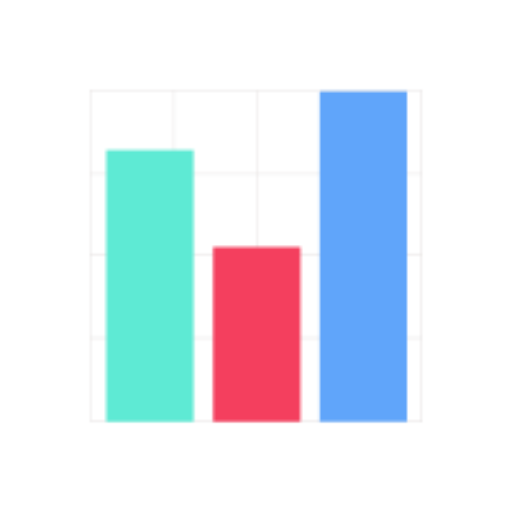Dash Plotly Pro-Dash Plotly Pro AI Assistant
AI-Powered Dash Plotly Assistance
Effective strategies for Dash in OpenShift?
Best practices for long callbacks in Dash?
Enhancing PostgreSQL performance for Dash?
Optimal Gunicorn configurations for Dash?
Related Tools
Load More
Plot AI
Specialized in the Art of Data Visualization, with a Focus on Bioinformatics Applications. Now comes with DNA Barcode Generator. **constantly updating**

Data Visualization Expert
A data viz expert specialized in creating charts and graphs from user-provided data with the knowledge to apply best practices for visual encoding, accessibility, and offer contextual suggestions for visualization types based on the provided data and inte

Data Visualizer 👉 Graphs 👉 Charts
Creates data visualizations, graphs, and charts.

数据图表匠人
我是数据图表匠人,专业将数据转化为图表。请上传想要制作图表所使用的数据,同时告知我你想要制作图表的内容和主题。

ClickHouse Pro
Specialized in answering detailed ClickHouse queries.

VizCritique Pro
This GPT provides expert analysis of data visualizations from any tool, focusing on best practices and dashboard design. Upload or paste a screenshot for feedback, and for more personalized feedback, please include context for infographics and experimenta
20.0 / 5 (200 votes)
Introduction to Dash Plotly Pro
Dash Plotly Pro is a specialized tool designed for advanced developers focusing on creating interactive web applications using Dash Plotly in Python. It integrates seamlessly with OpenShift for deployment, and PostgreSQL for robust database management. Additionally, it incorporates Celery for task scheduling, Redis for efficient data caching, and Gunicorn for managing Python web applications. The primary purpose of Dash Plotly Pro is to streamline the development and deployment of data-driven web applications, providing developers with powerful tools and frameworks to handle complex data visualization and backend processes efficiently. For example, a financial analyst could use Dash Plotly Pro to create a real-time dashboard tracking stock market trends, leveraging PostgreSQL for storing historical data, Redis for caching frequently accessed data, and Celery for scheduling data updates.

Main Functions of Dash Plotly Pro
Interactive Data Visualization
Example
Creating a real-time data dashboard to monitor IoT sensor data.
Scenario
A manufacturing company can use Dash Plotly Pro to develop a dashboard that displays real-time data from various IoT sensors across their production line. This dashboard can help in monitoring equipment performance, detecting anomalies, and making data-driven decisions to enhance operational efficiency.
Seamless Deployment on OpenShift
Example
Deploying a machine learning model as a web application on OpenShift.
Scenario
A data scientist can develop a machine learning model for predictive maintenance and deploy it as a web application on OpenShift using Dash Plotly Pro. This allows the model to be accessible to non-technical stakeholders via an intuitive interface, facilitating broader usage and adoption.
Task Scheduling with Celery
Example
Automating periodic data extraction and processing tasks.
Scenario
A logistics company can use Celery within Dash Plotly Pro to schedule regular tasks such as data extraction from various sources, processing and transforming the data, and updating a dashboard with the latest insights. This ensures that decision-makers always have access to up-to-date information.
Ideal Users of Dash Plotly Pro
Data Scientists and Analysts
Data scientists and analysts benefit from Dash Plotly Pro by creating interactive, real-time visualizations that can help in uncovering insights and communicating findings effectively. The tool's robust integration with PostgreSQL allows for efficient handling of large datasets, while its deployment capabilities ensure their work is accessible and usable by a wider audience.
Software Engineers and Developers
Software engineers and developers leverage Dash Plotly Pro to build and deploy sophisticated web applications that require real-time data visualization and backend processing. The tool's compatibility with OpenShift, Celery, and Redis enables developers to manage complex workflows, scale applications efficiently, and ensure high performance and reliability.

Guidelines for Using Dash Plotly Pro
Visit aichatonline.org
Access the platform for a free trial without login, no need for ChatGPT Plus.
Set Up Prerequisites
Ensure Python, Dash Plotly, and necessary libraries like Pandas are installed.
Create Dash App
Initialize a Dash app and define your layout and callbacks.
Deploy on OpenShift
Configure your OpenShift environment and deploy your Dash app using Docker and Kubernetes.
Integrate with PostgreSQL
Connect your Dash app to a PostgreSQL database using SQLAlchemy for data storage and retrieval.
Try other advanced and practical GPTs
Tech Architect Guru
AI-driven solutions for technical excellence.

Storyboard AI
AI-powered storyboard creation tool.

Rate Me
Unleash AI-powered evaluations for your content.

Medi Summary Specialist
Effortlessly generate detailed OPD summaries with AI

Redundancy and Repetition Checker - CE 101
Enhance clarity with AI-driven redundancy checks

100% match Your CV with Job Description
AI-powered tool for perfect CV-job alignment.

Java 17 Postgresql 16
Powerful AI-enhanced Java and PostgreSQL integration

Java Engineer Expert
AI-Powered Tool for Java Development

GC FAQ-Assistant
Your AI-powered FAQ and support tool.

Email Assistant
AI-powered email drafting made easy

Yolo v8 Helper
AI-Powered Yolo v8 Project Assistance

Geo Genius
Unlock Earth's Secrets with AI

- Academic Research
- Data Visualization
- Machine Learning
- Real-time Analytics
- Financial Analytics
Detailed Q&A about Dash Plotly Pro
What is Dash Plotly Pro?
Dash Plotly Pro is a specialized GPT designed to assist with Dash Plotly applications in Python, including deployment on OpenShift, and integration with PostgreSQL, Celery, Redis, and Gunicorn.
How can I integrate PostgreSQL with Dash?
Use SQLAlchemy to connect your Dash app to PostgreSQL. Set up your database URI, create engine and session instances, and use them within your Dash callbacks to interact with the database.
How do I deploy a Dash app on OpenShift?
First, create a Dockerfile for your Dash app. Then, configure an OpenShift project, create a deployment configuration, and use OpenShift’s CLI or web console to deploy your app.
What are common use cases for Dash Plotly Pro?
Dash Plotly Pro is used for data visualization dashboards, real-time analytics, machine learning model deployment, financial analytics, and academic research tools.
How does Celery and Redis fit into a Dash Plotly app?
Celery can be used for background task processing, while Redis serves as a message broker. Together, they help manage asynchronous tasks, improving the performance of your Dash app.